We drove west from Isabela to explore the Cara del Indio (Face of the Indian), Cueva del Indio (Cave of the Indian), and anything else we stumbled upon, including Taino and Spanish ruins, ocean arches, and one disgraced explorer.
Cara Del Indio
The Cara del Indo, a giant face carved into a hillside rock at the entrance to the coastal town of Isabela, represents Cacique (chief) Mabodamaca, a Taino leader who tried to protect his people from the Spanish trying to take the land. The chief’s giant visage welcomes visitors to Porta del Sol (Gateway of the Sun), the west coast region of Puerto Rico.
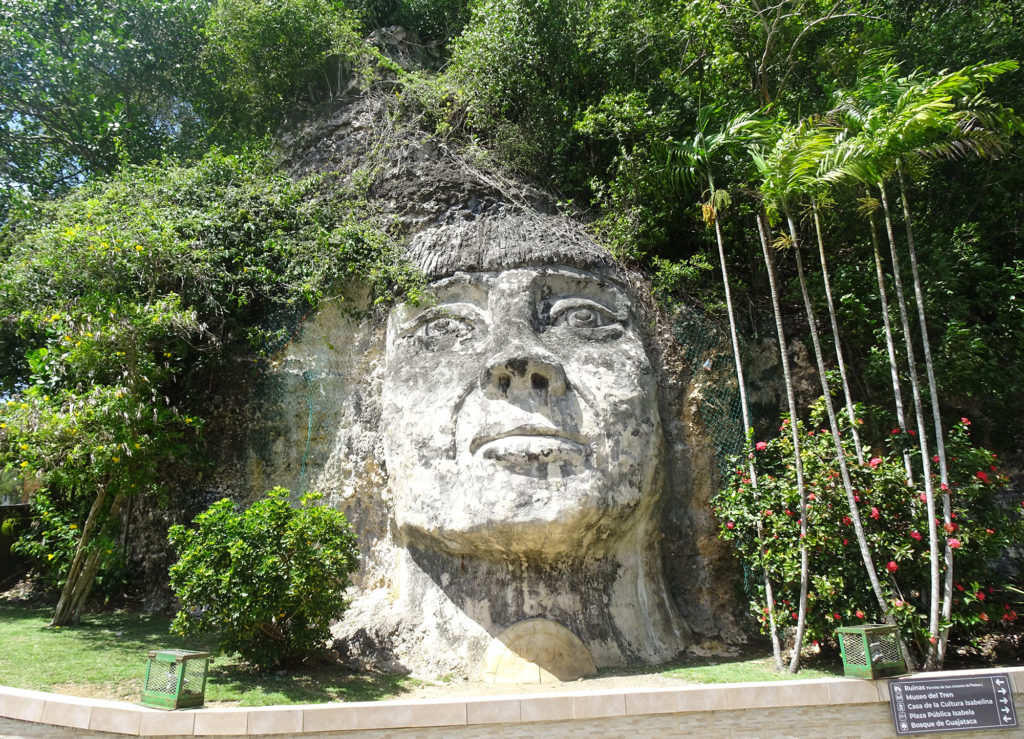
Cueva del Indio
Located farther east in the northcoast town of Arecibo, the Cueva del Indio is an impressive cave surrounded by dramatic cliffs that face the Atlantic Ocean. The cave gets its name from the pre-Columbian indigenous petroglyphs that are found in the walls of the cave.
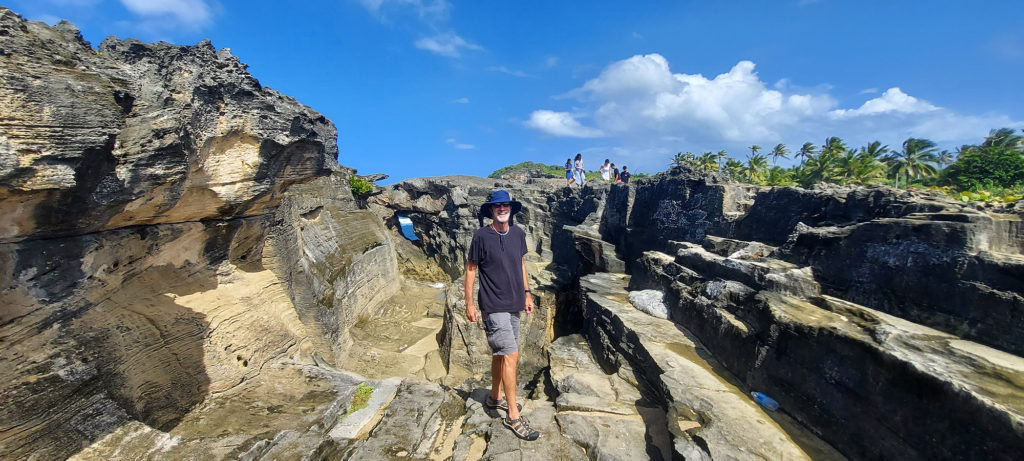
However, the climb into the cave is a young person’s activity; we peered down into the yawning chasm, and saw a couple of petroglyphs carved outside.
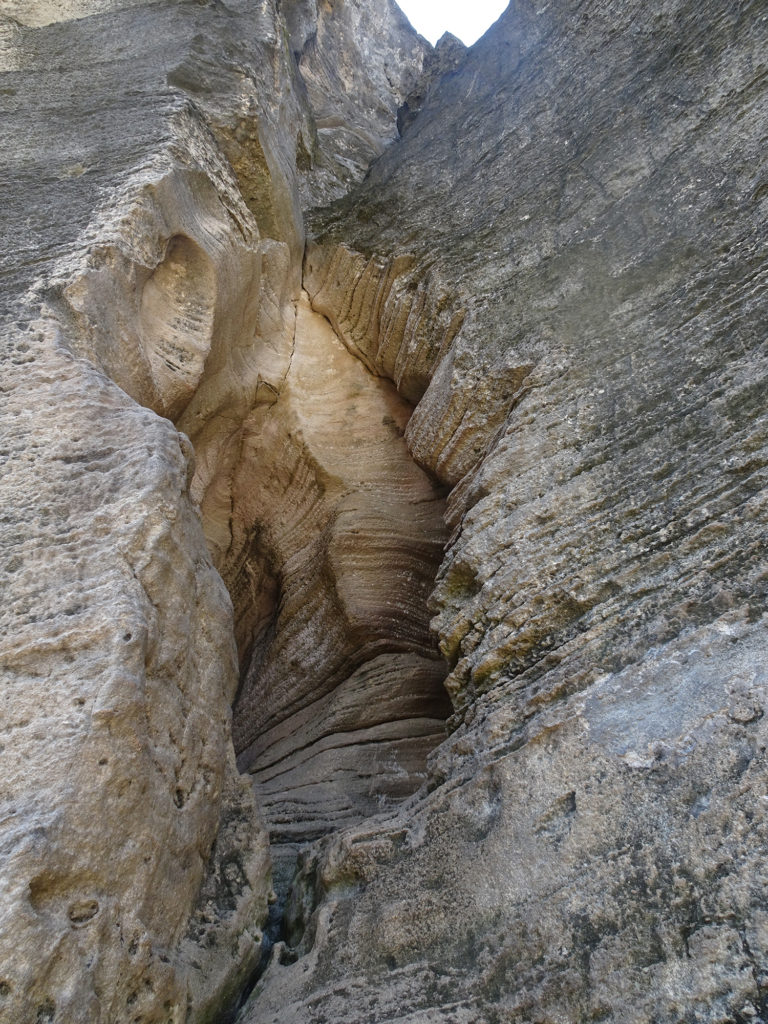
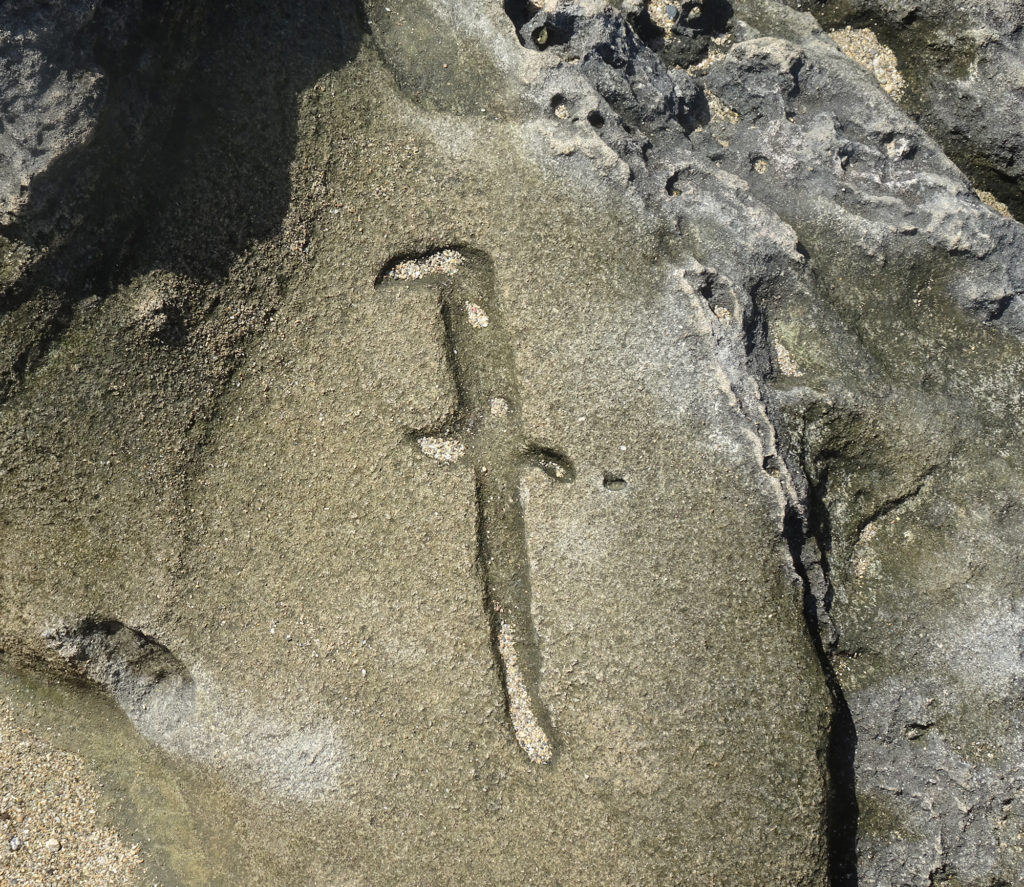
Perhaps we’ll return with better climbing shoes (since we can’t bring younger bodies) and try to get in another time.
There are also seven dramatic arches you can hike to. The hike is short but difficult, on jagged rocks under hot sun with no shade. Wear good shoes and carry water.

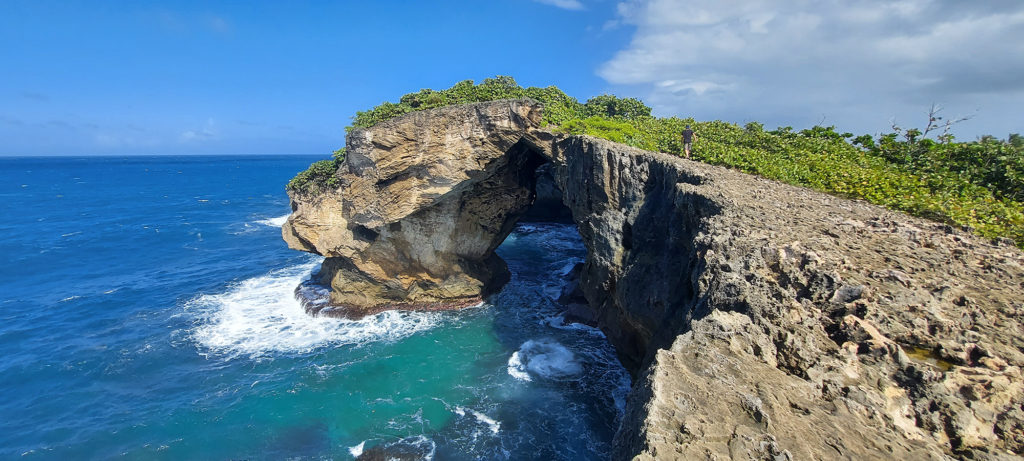
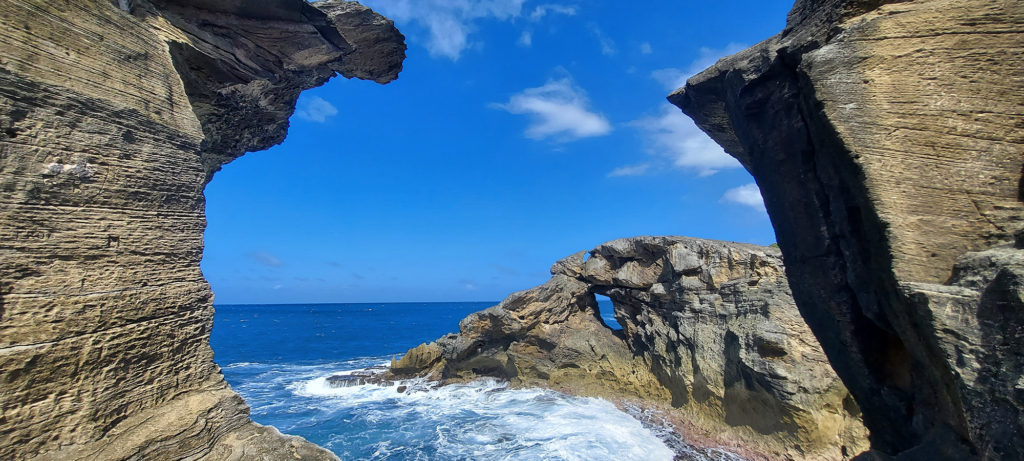
We paid $5 each at the entrance, got a short talk with photos from the park staff person, and then we were on our own.
Ermita (Hermitage) San Antonio de Padua de la Tuna
We spotted a road sign and turned out of curiosity toward Ermita San Antonio de Padua de la Tuna, the remains of the first Spanish settlement in the northwest region of Puerto Rico. The Spanish lved here until they decided to move their community to Isabela, on the coast, but the original church remains here. Alas, the visitors center is only open on weekends, and the remains were locked up. (Ermita means Hermitage)
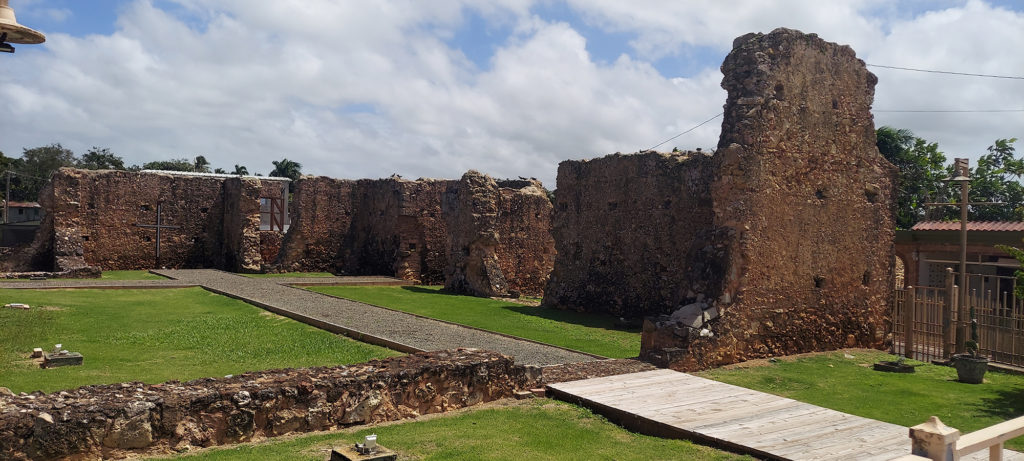
I did learn that the ruins of the original church have been preserved with help from the Mabodamaca Corporation, named was in honor of great Taino chieftain, and it is listed on the US National Register of Historic Places.
Arecibo Lighthouse
The less said about this lighthouse, the better. It’s a lovely building, but we didn’t get close. The cost was $12 apiece to get in, and the area around the lighthouse has been turned into a kids’ amusement park – even the lighthouse sign has a pirate in it.
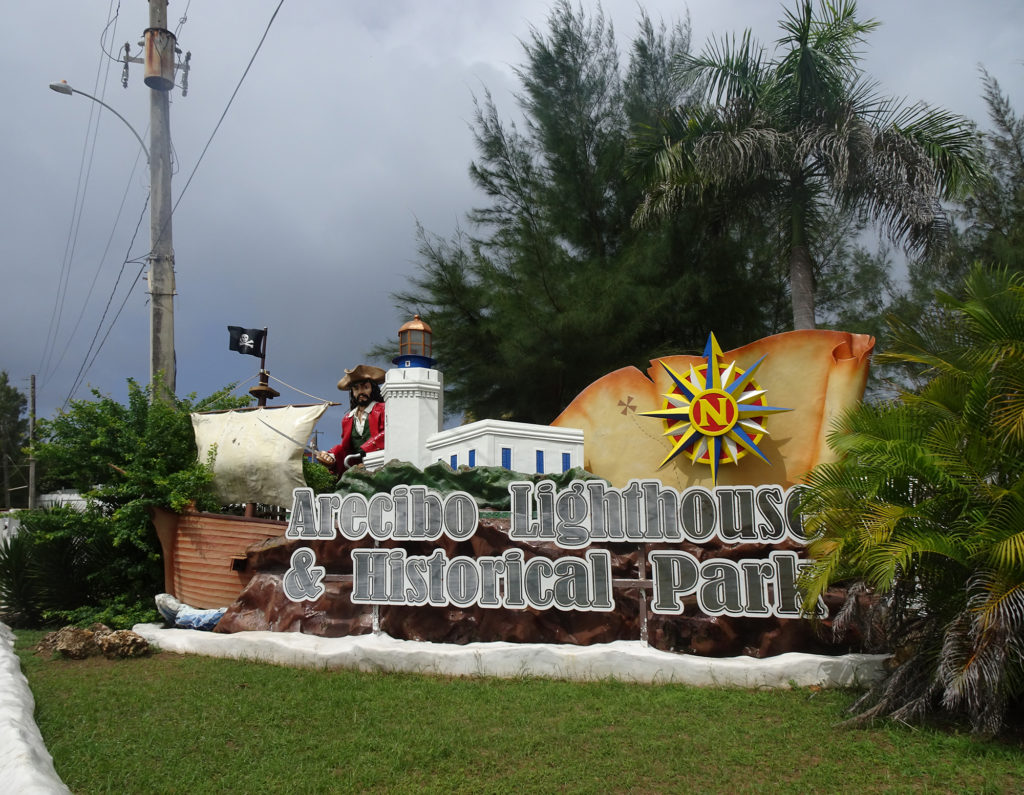
If I had brought my great-niece Audrey, I would have happily paid for half a day’s family amusement. But for a geezer and her young husband just wanting to see a lighthouse? Not worth $24.
Here’s the view from the back, from the parking lot of the next beach over. Stilll not worth $24.
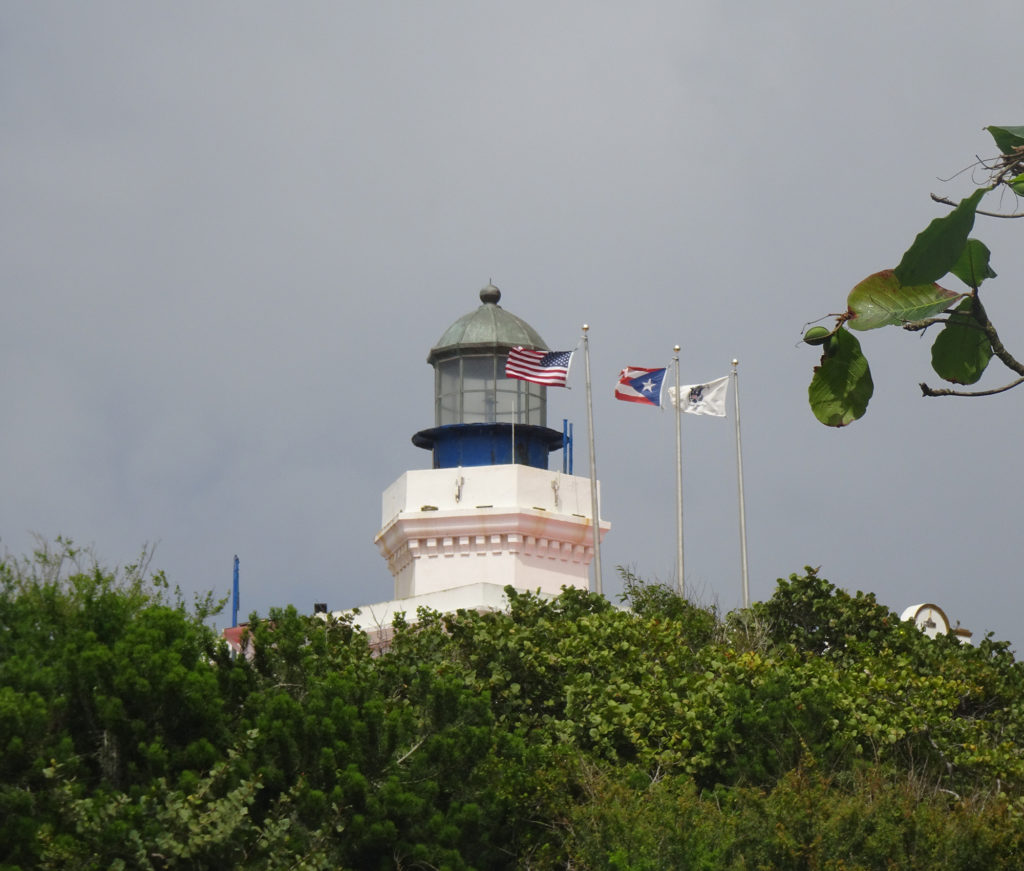
Christopher Columbus Statue
Why is there a statue of Cristóbal Colón (Christopher Columbus) plunked down on a hill near the ocean in Arecibo? Inquiring minds wanted to know after we saw it looming from the Lighthouse.
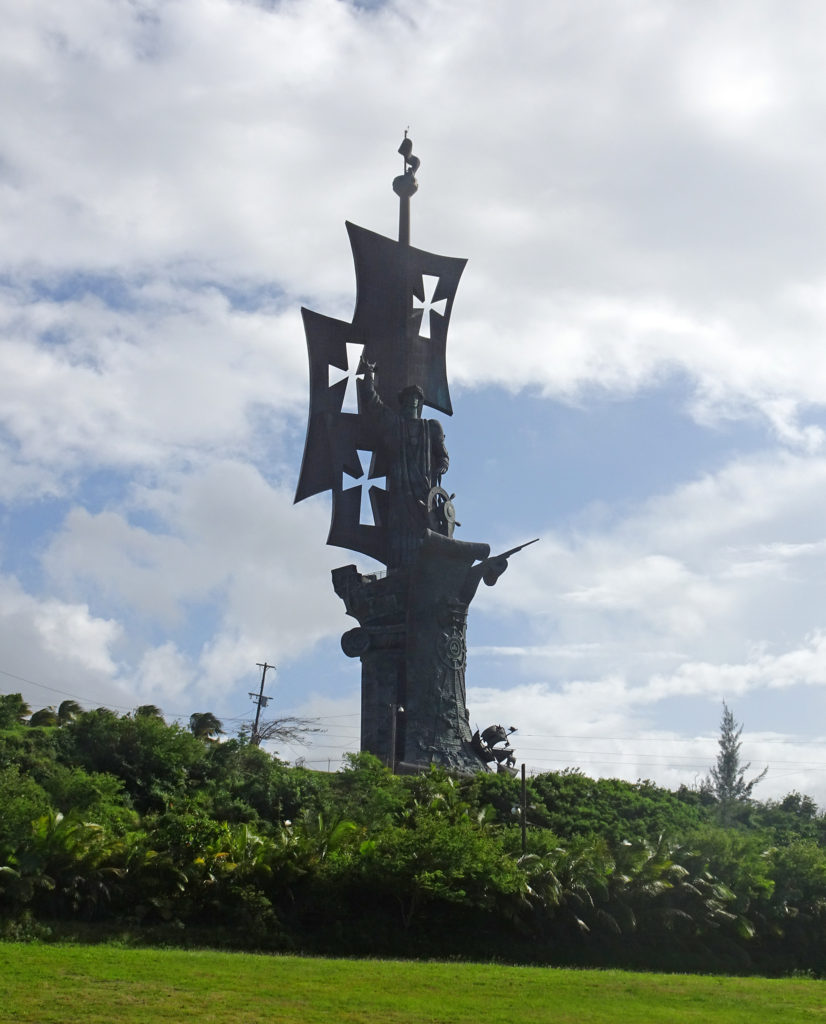
It’s a circuitous story involving a Georgian sculptor who created a gigantic statue in 1991 and then spent decades trying to find a community in the Americas to host it. During that time, Columbus’s stock plummeted as the world transitioned from calling him a conquering hero to a genocidal murderer. The artist’s options dwindled, the statue deteriorated, and he finally settled on Arecibo, given that all the other candidates had dropped out of the running. Sort of like Beijing hosting the Winter Olympics.
The name of the statue is Birth of the New World. Here is its history, according to Wikipedia:
Originally designed by Georgian sculptor Zurab Tsereteli as a monument to commemorate the 500th anniversary of Christopher Columbus‘ first voyage Birth of the New World was constructed in 1991. The statue prominently depicts Columbus controlling an anachronistic depiction of a steering wheel, with a backdrop featuring the Niña, Pinta and Santa María traversing the Atlantic Ocean.[2] Made of 2,750 bronze and steel pieces and weighting more than 1,300,000 pounds (590 tons), the monument’s 360 ft (110 m) height made it the tallest in the Western Hemisphere during the last decade of the 20th century, dwarfing the Statue of Liberty[3] and the Monumento a la Virgen de la Paz.
New York, Miami, Fort Lauderdale, Columbus, OH, Baltimore, and other cities rejected Tsereteli’s offer of the statue. In the end, a consulting firm estimated that the statue would attract at least 300,000 tourists per year. Given that we couldn’t even find parking or an entrance, and had to take shots through a fence by a narrow beach road, I would say that estimate might have been on the high side.
Read the whole sorry tale.
Enjoy the Messy Suitcase YouTube Video!
Links
Cara del Indio
Cueva del Indio
Ermita San Antonio de Padua de la Tuna
Christopher Columbus History

